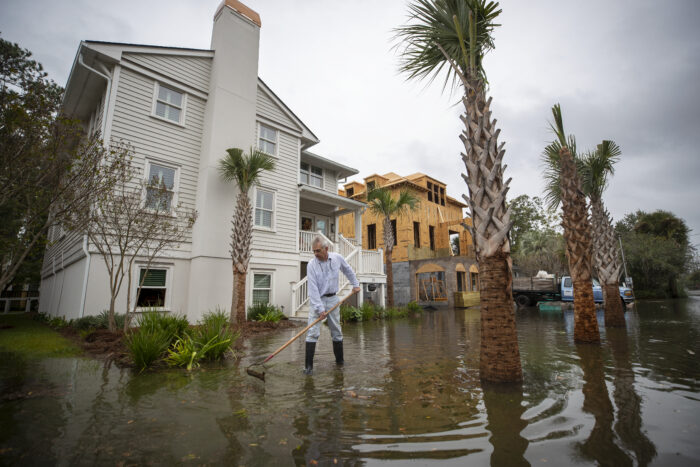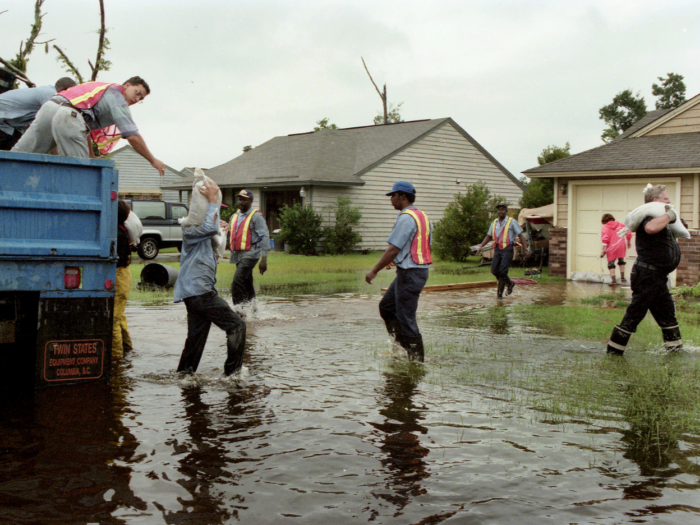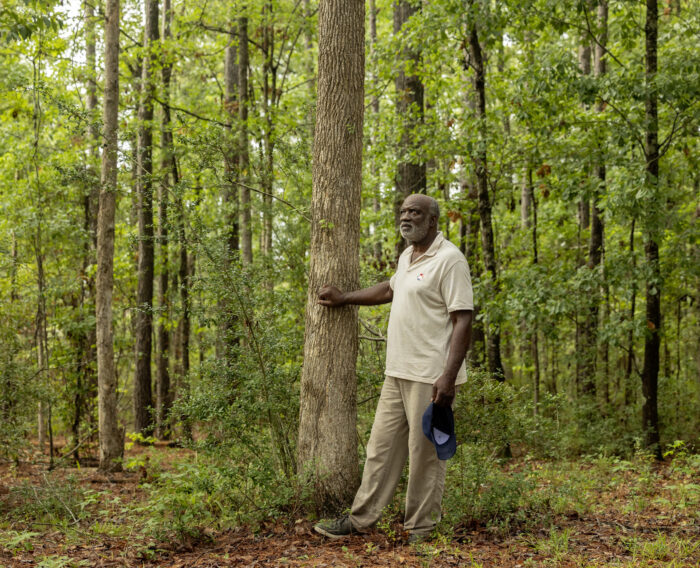South Carolina leads the region in proactive climate planning
The changing climate presents myriad problems to solve, affecting people, wildlife, natural systems, and our economies. The release of the Fifth National Climate Assessment at the end of 2023 emphasized the urgent need to address the causes and effects of climate change, especially disproportionate impacts on rural and under-sourced communities in the South.
Last year, South Carolina answered the call for urgent climate action by committing to statewide resilience initiatives, local collaboration, and community-led climate planning. While there’s more work to be done, the progress made here can serve as a model for other Southern states looking to beef up resilience efforts.
Climate hazards aren’t isolated to the coast, but they are felt more urgently here. The way we respond to climate threats here can lead the way for inland states to prepare for the worst impacts.
Chris DeScherer, SELC South Carolina Office Director
Statewide resilience efforts can bolster disaster preparedness and mitigate impacts
Our country now sees a billion-dollar weather disaster every three weeks on average, compared to every four months in the 1980s. When extreme weather and disasters hit our communities, acute and reactive emergency management and disaster recovery swoop in. But addressing damages on the back end does not lessen future impacts. By contrast, resilience planning can create a path forward for how the state can prepare for the next storm and safeguard its residents and offers a more cost-effective solution — according to the National Institute of Building Sciences, each dollar invested in resilience saves roughly six dollars when disaster strikes.

After a series of storms hammered the state, including Hurricane Florence in 2018, the need was clear: South Carolina needed to prepare for the worst impacts of extreme weather rather than just cleaning up after damage. The South Carolina Office of Resilience was created in 2020 to reduce the impact of future disasters by increasing resilience and reducing risk of property and life lost.
In a major step to achieve these goals, mandated by the Disaster Relief and Resilience Act, SCOR released a Statewide Resilience Plan last summer, the first of its kind in the state and one of a handful in the country. In fact, following South Carolina and other states’ leads, a bipartisan group of senators introduced the National Coordination for Adaptation and Resilience for Security Act bill at the end of last year, which would set up a federal disaster planning process to better connect state efforts to federal resources and processes.
It might surprise people to hear plans like this aren’t more common. While emergency management and disaster recovery are reactive, SCOR’s statewide resilience plan will spur more preparation and planning so that when the next storm hits, we’re on better footing.
Jenny Brennan, Climate Analyst
South Carolina’s Strategic Statewide Resilience and Risk Reduction Plan involved input from stakeholders across South Carolina, including conservation groups like SELC. The plan offers 54 actionable recommendations that serve to funnel state investments into programs, policies, and projects that mitigate flooding and protect South Carolinians from extreme weather. By committing to the plan, South Carolina’s government is placing responsibility at the planning phase and committing to address climate change, making sure we’re ready when the storm hits rather than waiting to clean up the mess after extreme weather.
“South Carolinians are familiar with the devastating effects of hurricanes, flooding, and other extreme weather. Our office has been on the ground rebuilding and repairing homes and walking through the recovery process with our citizens,” said Chief Resilience Officer Ben Duncan. “Now we have a plan that will help our communities address these risks proactively.”
Statewide flood disclosures ensure transparency and hazard preparedness
Flooding from extreme weather and disasters can be especially destructive to our ways of life, especially in South Carolina due to its low-lying landscape. Nearly 210,000 South Carolinians live in flood-prone areas, and those affected by flooding are likely to get hit again.
Before last year, home buyers in the state did not receive clear information about a property’s flood history and erosion risks, leaving buyers in the dark about future risks and costs. Now, thanks to leadership by the South Carolina Real Estate Commission and input from groups like SELC, the Coastal Conservation League, and South Carolina REALTORS®, a new disclosure form captures information about flood history and coastal hazards, providing more transparency so that buyers can better prepare for future floods through flood insurance and other precautions.
“The revised Residential Property Disclosure Statement strikes a great balance between increasing consumer awareness while also protecting existing homeowner rights,” said Nick Kremydas, Chief Executive Officer of South Carolina REALTORS®. “These changes would not have been possible without the forward thinking of the Real Estate Commission and the leadership of their Chairman Andy Lee nor the efforts of SELC and Coastal Conservation League. It was pleasure to work with these groups for changes that will protect lives, properties, and dreams.”
Similar efforts by SELC and partners in North Carolina led the NC Real Estate Commission to require disclosure of flood history there too. And we’re working on similar progress in other states in our region.
Local collaborations paramount to informed resilience planning

As people relocate to South Carolina in droves and urban development increases, municipalities need to evaluate their laws and policies around smart building practices. Failing to build with the natural environment and climate change in mind can create disastrous consequences and make certain climate hazards even worse. Some construction practices are especially incompatible with coastal development as they can exacerbate flood risks and are difficult and expensive to move or alter.
In a collaborative effort to improve policy regarding building in 100-year floodplains in Charleston, stakeholders including SELC, Historic Charleston Foundation, Coastal Conservation League, Charleston Homebuilders, Charleston Chamber of Commerce, and the Trident Association of Realtors worked with the City of Charleston to strengthen our laws to pave the way for construction methods that better address flooding from sea level rise and extreme weather, prohibiting methods like slab-on-grade that exacerbate flooding and put communities at risk of harm.
Our local policies need to keep up with the worsening flooding and storms we’re seeing on the coast. This commonsense measure is just the start of the changes needed to address the problems we are having and will have in the future.
Emily Cedzo, Director of Conservation Programs and Policy at Coastal Conservation League
The Southeast chapter of the Fifth National Climate Assessment highlighted another critical problem: due in part to prevailing, systemic racial discrimination in the South, climate change disproportionately impacts overburdened Southern communities. This injustice underscores the need for Black, Brown, and lower-income communities to have a seat at the table when resilience planning occurs.
Climate planning efforts have been funneled primarily into wealthier and whiter communities. But groups including SELC are working hard to move South Carolina toward policies that protect everyone by working with local communities across our region, including in the Phillips Community in Charleston, to learn more from residents about flooding problems and solutions needed in their communities.

To this end, the community, SELC, and our partners recently convinced Charleston County to amend its plan to widen a highway through Phillips that would have displaced residents and exacerbated flooding. With climate change increasingly threatening our way of life through extreme heat, rising sea levels, and more intense storms, proactive climate planning is needed everywhere, not just along the coast.
By committing to statewide resilience planning and investing in local, community-led efforts, what South Carolina has achieved on multiple levels can serve as a model for other states looking to close the gap between what we know needs to be done and what has been done.
